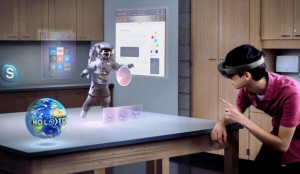Microsoft’s Holographic Platform Opening Mixes It Up
Microsoft last week announced it would open its Windows Holographic platform to partner firms looking to develop products for the Hololens ecosystem.
Microsoft already is already working with a range of partners — including Intel, AMD, Qualcomm and others — to build a hardware ecosystem that can support mixed-reality environments, company officials said at Computex.
“We are providing an opportunity for our OEM, ODM and developer partners to build devices and experiences that utilize the Windows Holographic platform to build mixed reality perception-capable experiences regardless of whether they are developing for AR, VR or anything in-between,” a Microsoft spokesperson said in statement provided to TechNewsWorld by company rep Molly Terrell.
“For our OEM and ODM partners, this means new business opportunities through unlocked device capability and experiences. For developers, this represents a first step in growing and scaling our platform,” the spokesperson added.
Pushing the Boundaries
The market for virtual reality is expected to grow to 80 million devices per year by 2020, noted Terry Myerson, executive vice president for Microsoft’s Windows and Devices Group, and Microsoft sees an opportunity in making these systems interactive with the physical world and with each other.
“However, many of today’s devices do not work with each other, provide different user interfaces, interaction models, input methods, peripherals and content,” Myerson pointed out. “And most virtual reality experiences can’t mix real people, objects and environments into the virtual world, making creation and collaboration difficult.”
Microsoft aims to push the boundaries of mixed reality, integrating virtual reality tools with the physical spaces where real people work and interact, he said. For example, a user wearing a VR device could work on a scanned three-dimensional image of a real object, or collaborate with another person in a virtual workspace.




